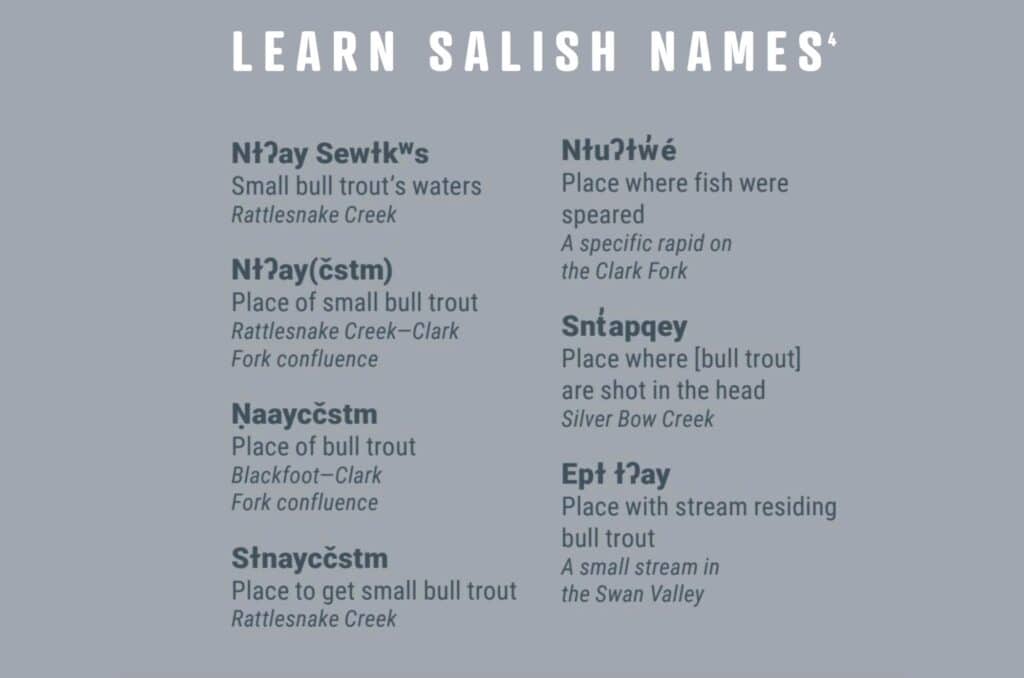Buying local filets gives Flathead Lake’s native fish a fighting chance.

Cold water dripped back into Montana’s largest natural lake as nets full of silvery, shining trout slid into the boat. Beneath the towering Mission Mountains, the Confederated Salish and Kootenai Tribes harvest non-native lake trout from Flathead Lake to aid the fish that have supported them for generations.
Native Fish Keepers, a tribally run, not-for-profit corporation, is commercially netting adult lake trout and selling the filets to support their ongoing efforts. By reducing the population of lake trout, the tribes are not only restoring native fish to healthy numbers but also restoring ecological integrity and the tribes’ critical natural heritage.
“This is a mitigation program first and a business second,” said Lynn DuCharme, who manages education and marketing efforts for Native Fish Keepers. “We’re excited about making a difference in the lake.”
In 1905, lake trout were introduced into Flathead Lake to create a sports fishery. Unfortunately, these large fish prey on and suppress the native species in the watershed, including native bull trout and westslope cutthroat trout. According to DuCharme, “both species are important culturally and spiritually to the tribes.”
There are more Salish place names in western Montana describing bull trout than any other plant or animal, reflecting this fish’s importance to native tribes.
Bull trout populations are declining at a rate where many experts believe they could vanish from Flathead Lake by the end of the century. Since 1998 they’ve been listed as “threatened” under the Endangered Species Act. Furthermore, westslope cutthroat trout have decreased by roughly two-thirds since monitoring began in 1981.

To catch the lake trout, the tribes set nets in the lake’s deep waters–similar to how fishermen harvest salmon in the Pacific Ocean. They are carefully placed in specific areas and depths to improve the odds of only catching lake trout. When checking the nets, the fish are quickly removed and placed on ice before being transported to an onshore processing facility owned and managed by the tribes.
The program is expensive; it requires multiple boats, extensive fishing gear, and nearly two dozen tribal personnel. Most importantly, it must go on perpetually since the Native Fishkeepers cannot remove lake trout from the watershed entirely.
Though proceeds from the sale of fish will never wholly offset costs, all sales funnel back into the operation, and purchases of their filets will continue to support ongoing native trout conservation. 
Native Fish Keepers supply approximately 20,000 pounds of fish annually to food banks, restaurants, and grocery stores across the state. “The response from customers has been phenomenal,” said DuCharme. “Demand exceeds supply.”
When purchasing their products from local retailers or restaurants, you support the conservation of native bull trout and westslope cutthroat trout in the Flathead watershed and the communities that rely on them.


